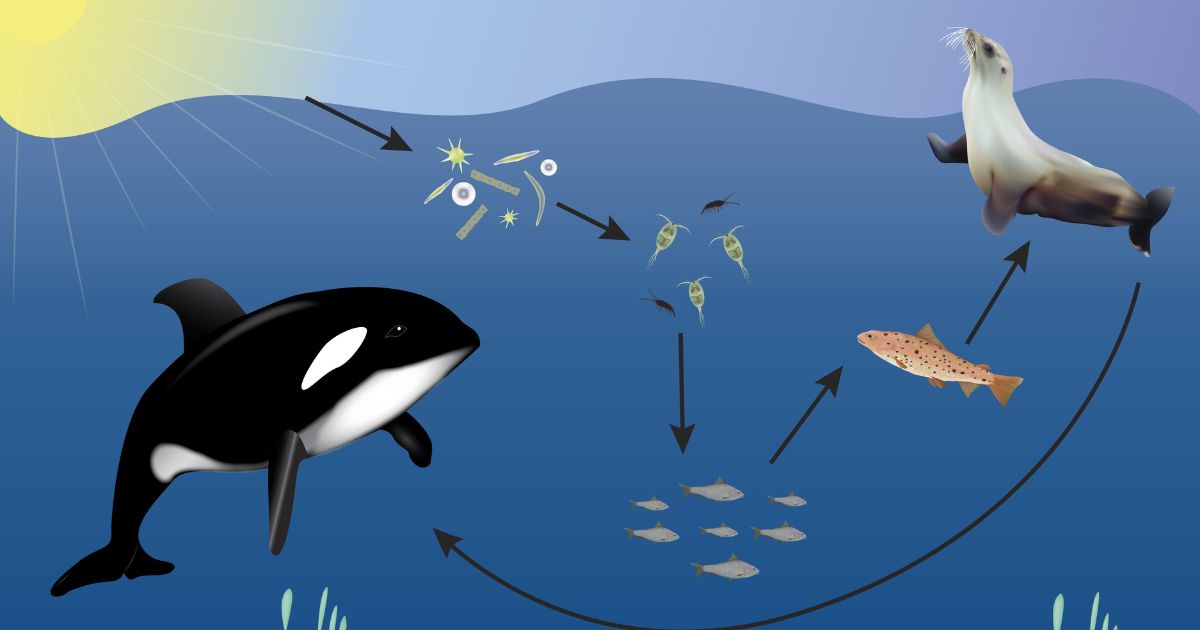In the vast and seemingly barren landscapes of deserts, a complex web of life exists, sustained by an intricate food chain. With every step in this chain, from the resilient producers harnessing the sun’s energy to the apex predators reigning supreme, the delicate balance of this ecosystem is maintained. Join us as we explore the fascinating world of the desert food chain, uncovering its remarkable adaptations and uncovering the threats that loom over its existence.
Key Takeaways
- Producers, such as cacti, are the foundation of the desert food chain as they convert sunlight into organic matter and provide energy for the entire ecosystem.
- Primary consumers, like jackrabbits and desert tortoises, consume plant material and transfer energy to higher trophic levels.
- Secondary consumers, such as coyotes and foxes, are omnivores that consume both plant and animal food sources and play a role in regulating prey populations.
- Apex predators, like mountain lions and hawks, are tertiary consumers that prey on lower trophic levels to maintain the balance of the desert ecosystem. They also contribute to the nutrient cycle and control the population of prey species.
Desert Food Chain Examples
The desert food chain thrives on the interdependence of various organisms, with examples including the coyote preying on the jackrabbit and the scorpion feeding on smaller insects. In the Sonoran desert, primary consumers such as jackrabbits, kangaroo rats, and desert tortoises feed on the producers, which mainly consist of cacti and other desert plants.
These primary consumers serve as a crucial link in the food chain, providing energy and sustenance to predators like coyotes and birds of prey, which are considered secondary consumers. Additionally, smaller predators such as scorpions and spiders feed on insects and other small organisms, acting as tertiary consumers. The trophic levels within the desert food chain are interconnected, forming a complex web of interactions that ensure the survival and balance of the ecosystem.
Producers – The Foundation of the Desert Food Chain
Cacti and other desert plants, as the primary producers in the desert biome, play a vital role in providing energy and sustenance for the entire ecosystem while forming the foundation upon which the trophic levels are built and interconnected. These plants are adapted to the harsh desert environment, surviving in extreme conditions such as high temperatures and scarce water resources. Through photosynthesis, they convert sunlight into organic matter, which becomes a source of energy for other organisms in the desert food chain.
The flow of energy begins with the desert plants, as they are consumed by herbivores, which are then preyed upon by carnivores. This transfer of energy allows for the survival and maintenance of the diverse desert ecosystem. Without the presence of these producers, the desert food chain would collapse, disrupting the delicate balance and interdependence of organisms in this unique habitat.
Primary Consumers – Herbivores Adapted to the Desert
A variety of herbivorous animals, such as jackrabbits and desert tortoises, have evolved unique adaptations to survive as primary consumers in the harsh desert environment. These herbivores play a crucial role in the desert food chain by consuming plant material and transferring energy to higher trophic levels. To thrive in this contextually relevant ecosystem, they have developed specialized characteristics. For instance, the desert tortoise has a drought-resistant metabolism that allows it to survive on the sparse vegetation found in the desert.
Additionally, they have evolved a mechanism to store water in their bladders, enabling them to survive in arid conditions. Jackrabbits, on the other hand, have long legs for efficient movement and large ears to dissipate heat. They have also adapted to feed on desert milkweed, a plant that contains toxic compounds and deters most herbivores. These primary consumers are an important food source for secondary consumers – omnivores of the desert – which will be discussed in the following article section.
Secondary Consumers – Omnivores of the Desert
Omnivores in the desert, such as coyotes and foxes, utilize a combination of plant and animal food sources to meet their dietary needs. These adaptable creatures play an important role in the desert food chain, acting as secondary consumers. Here are three key points about omnivores in the desert:
- Dietary flexibility: Omnivores have the ability to consume both plant matter and other animals. This allows them to obtain the necessary nutrients and energy required for survival in the harsh desert environment.
- Water dependency: Unlike herbivores, which can obtain water from plant sources, omnivores need to actively seek out water sources to survive. They must constantly balance their need for water with their need for food.
- Ecological significance: As secondary consumers, omnivores occupy a crucial position in the food chain. They regulate the populations of their prey, preventing overconsumption and promoting a balanced ecosystem. Additionally, they serve as a valuable food source for apex predators and quaternary consumers in the desert.
Tertiary Consumers – The Predators
Several apex predators, such as mountain lions and hawks, occupy the role of tertiary consumers in the desert food chain, exerting their predatory influence on lower trophic levels. These predators play a crucial role in maintaining the delicate balance of the desert ecosystem. In the harsh conditions of the desert, where resources are scarce, these predators have adapted to survive by preying on smaller animals.
One such predator is the sand cat, a desert species known for its ability to thrive in extreme temperatures and sandy terrain. These animal eaters rely on a variety of prey species, including birds, rodents, and reptiles, to meet their nutritional needs. The presence of these tertiary consumers ensures that the population of prey species is controlled, preventing overconsumption and maintaining the overall health of the desert ecosystem.
| Predators | Prey species | Source |
|---|---|---|
| Mountain lions | Deer, rabbits | Books |
| Hawks | Small birds, rodents | Jay W. Sharp |
| Sand cats | Birds, rodents, reptiles | Books |
Apex Predators – Kings of the Desert
Lions and cheetahs, the apex predators of the desert, are known for their exceptional hunting skills and ability to dominate the harsh desert landscape. These kings of the desert play a crucial role in the desert food chain, ensuring the balance and sustainability of the ecosystem. Here are three key aspects of their role:
- Preying on herbivores: Lions and cheetahs primarily feed on herbivores like gazelles and impalas. By controlling their population, apex predators prevent overgrazing, which could lead to the depletion of vegetation in the desert.
- Decomposition: After consuming their prey, lions and cheetahs produce waste and carcasses. These organic materials contribute to the nutrient cycle in the desert soil, enriching it with vital nutrients and minerals.
- Scavenging: Apex predators also scavenge on animal matter left behind by other predators or natural deaths. This scavenging behavior helps in the breakdown of dead organisms and further enhances the nutrient availability in the desert ecosystem.
Furthermore, the presence of apex predators influences the behavior of other animals, leading to a more cohesive and structured desert community. Their presence also ensures the regulation of prey populations, reducing competition for resources and promoting a healthy ecosystem.
Threats to the Desert Food Chain
A significant challenge to the desert food chain is the increased frequency of droughts, which negatively impacts the availability of water and vegetation for the diverse range of organisms that rely on them for survival. In desert ecosystems, water is a precious resource, and its scarcity during droughts affects every level of the food chain. Plants, which form the base of the desert food chain, are unable to survive without sufficient water.
As a result, herbivores that depend on these plants for sustenance are also affected. The lack of food and water leads to reduced reproduction rates and increased mortality among herbivores. This, in turn, affects the predators that rely on these herbivores for their own survival. The scarcity of resources may also lead to increased competition among organisms, further impacting the delicate balance of the desert food chain. It is crucial to understand and mitigate the effects of droughts on desert ecosystems to ensure the preservation and sustainability of these unique habitats.
Frequently Asked Questions
How Do Primary Consumers in the Desert Food Chain Obtain Enough Water to Survive?
Primary consumers in the desert obtain water through various mechanisms, such as feeding on water-rich plants or extracting moisture from their prey. For example, the kangaroo rat is adapted to conserve water and can derive sufficient hydration from its diet of seeds.
What Are Some Examples of Producers in the Desert Food Chain and How Do They Adapt to the Harsh Desert Environment?
Producers in the desert food chain, such as cacti and shrubs, have unique adaptations to survive the harsh desert environment. These adaptations include water storage structures, deep root systems, and specialized photosynthesis mechanisms.
Are There Any Apex Predators in the Desert That Rely Solely on Scavenging for Food?
Apex predators in the desert ecosystem often exhibit opportunistic feeding behavior, which includes scavenging for food. While not relying solely on scavenging, these predators supplement their diet by consuming carrion and carcasses found in the harsh desert environment.
How Do Secondary Consumers in the Desert Food Chain Obtain a Balanced Diet When Their Options for Food Are Limited?
Secondary consumers in the desert food chain obtain a balanced diet despite limited food options through a combination of feeding strategies, including opportunistic feeding, dietary adaptations, and resource partitioning. These mechanisms ensure their nutritional needs are met, promoting their survival and reproduction.
What Are the Main Human-Caused Threats to the Desert Food Chain and How Can They Be Mitigated?
Human-caused threats to the desert food chain include habitat destruction, climate change, pollution, and overexploitation. Mitigation measures include conservation efforts, sustainable land use practices, reducing greenhouse gas emissions, and implementing strict regulations on hunting and fishing.
Conclusion
In conclusion, the desert food chain is a complex network of interactions, where each organism plays a crucial role in maintaining the delicate balance of the ecosystem. From the producers, who harness the energy of the sun, to the apex predators, who regulate population sizes, every link in the chain is essential. However, human activities such as habitat destruction and climate change pose significant threats to the desert food chain, jeopardizing the survival of these unique and extraordinary ecosystems. As the saying goes, “Every action has a ripple effect.” …In the desert, every disturbance to the delicate balance of the food chain has far-reaching consequences, impacting not only the plants and animals directly involved but also the entire desert ecosystem as a whole.









